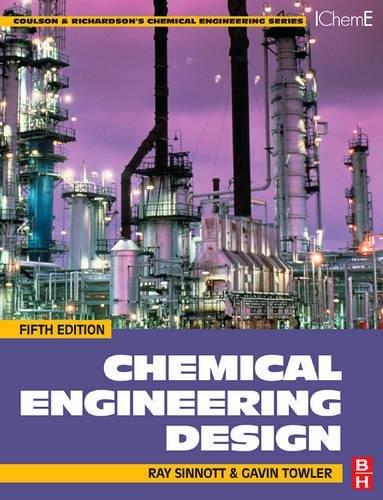Question
PLEASE ANSWER ALL! Choose the right one. Explain in one sentence. 1. If concentration gradients exist across the film surrounding a catalyst particle, what is
PLEASE ANSWER ALL! Choose the right one. Explain in one sentence.
1. If concentration gradients exist across the film surrounding a catalyst particle, what is likely to be reaction limiting? a. External mass transfer b. Internal mass transfer c. Adsorption d. Reaction on the surface
2. Calculate the diffusive flux of species A across a thin film 1cm thick, with the concentration of A on the two sides of the film being 2 mol/L and 0.1 mol/L, the diffusivity of A in the film is 10-9 m2/s, a. 6 b. 1.9*10-4 mol/m2 s c. 1.9*10-7 mol/m2 s d. 0
3. Species A is diffusing through a film onto a catalyst surface at a rate of 0.001 mol/m2 s. Calculate the diffusivity of species A in the film, if at steady state the concentration of A in the bulk is 6 mol/L and 0 mol/L on the surface, while the film thickness is 0.5cm. a. 0 m2 /s b. 3*104 m2 /s c. 6.7*10-7 m2 /s d. 8.33*10-10 m2/s
4. What is the molar flux in a liquid if a concentration gradient of 8000 mol/m4 exists and the diffusivity is 10-7 m2 /s? a. 8*10-4 mol/m2 s b. 8*10-11 mol/m2 s c. 8000 mol/m2 s d. 8 mol/m2 s
5. In equimolar counter diffusion, what does the flux equation simplify to? a. = ln(1 ) b. = c. = + ( + )
6. In diffusion through a stagnant film, what does the flux equation simplify to? a. = ln(1 ) b. = c. = + ( + )
7. If the diffusing species is in low concentration, what does the flux equation simplify to? a. = ln(1 ) b. = c. = + ( + )
8. In packed beds with high velocities what does the flux equation simplify to? a. = ln(1 ) b. = c. =
9. The diffusivity of gases increase with a. Temperature b. Pressure c. Both temperature and pressure d. Neither temperature and pressure
10. The diffusivity of liquids increases with temperature a. True b. False
11. What happens to the diffusivity of liquids when pressure is increased? a. Increases b. Remains constant c. Decreases
12. What is the order of diffusivity from highest to lowest a. Solid/liquid/gas b. Gas/liquid/solid c. Liquid/solid/gas d. Liquid/gas/solid
13. The mass transfer boundary layer is the distance at which the concentration is? a. 99% of the concentration of the bulk b. Equal to that of the catalyst surface c. Half way between the concentrations of the bulk and the surface
14. The mass transfer coefficient has units of? a. m b. m/s c. mol/m2 s d. dimensionless
15. The Reynolds number is the ratio of a. Inertial and viscous forces b. Convective to Conductive Heat transfer c. Momentum diffusivity (viscosity) to mass diffusivity d. Convective mass transfer to diffusive mass transfer
16. The Sherwood number is the ratio of a. Inertial and viscous forces b. Convective to Conductive Heat transfer c. Momentum diffusivity (viscosity) to mass diffusivity d. Convective mass transfer to diffusive mass transfer
17. The Nusselt number is the ratio of a. Inertial and viscous forces b. Convective heat transfer to conductive heat transfer c. Momentum diffusivity (viscosity) to mass diffusivity d. Convective mass transfer to diffusive mass transfer
18. Which dimensionless group contains the mass transfer coefficient? a. Reynolds number b. Sherwood number c. Schmidt number d. Nusselt number
19. Out of the following options for an external mass transfer limited packed bed reactor, what is the best way to increase the conversion? a. Increase the particle size b. Increase viscosity c. Increase velocity d. Increase temperature
20. Out of the following options for an external mass transfer limited packed bed reactor, what is the best way to increase the conversion? a. Decrease the particle size b. Reduce the reactant concentration c. Increase the pressure d. Reduce the temperature
21. The Mears criterion for external mass transfer indicates a. When the conversion is near 100% b. When the reaction is external mass transfer limited c. When the catalyst is deactivating d. When the catalyst is operating at low selectivity
22. Usually external temperature gradients are greater than external mass transfer gradients? a. True b. False
23. Which of the following can be used to calculate the mass transfer coefficient for a packed bed reactor? a. Thoenes-Kramers correlation b. Langmuir Hinshelwood correlation c. Frssling correlation
Step by Step Solution
There are 3 Steps involved in it
Step: 1

Get Instant Access to Expert-Tailored Solutions
See step-by-step solutions with expert insights and AI powered tools for academic success
Step: 2

Step: 3

Ace Your Homework with AI
Get the answers you need in no time with our AI-driven, step-by-step assistance
Get Started


